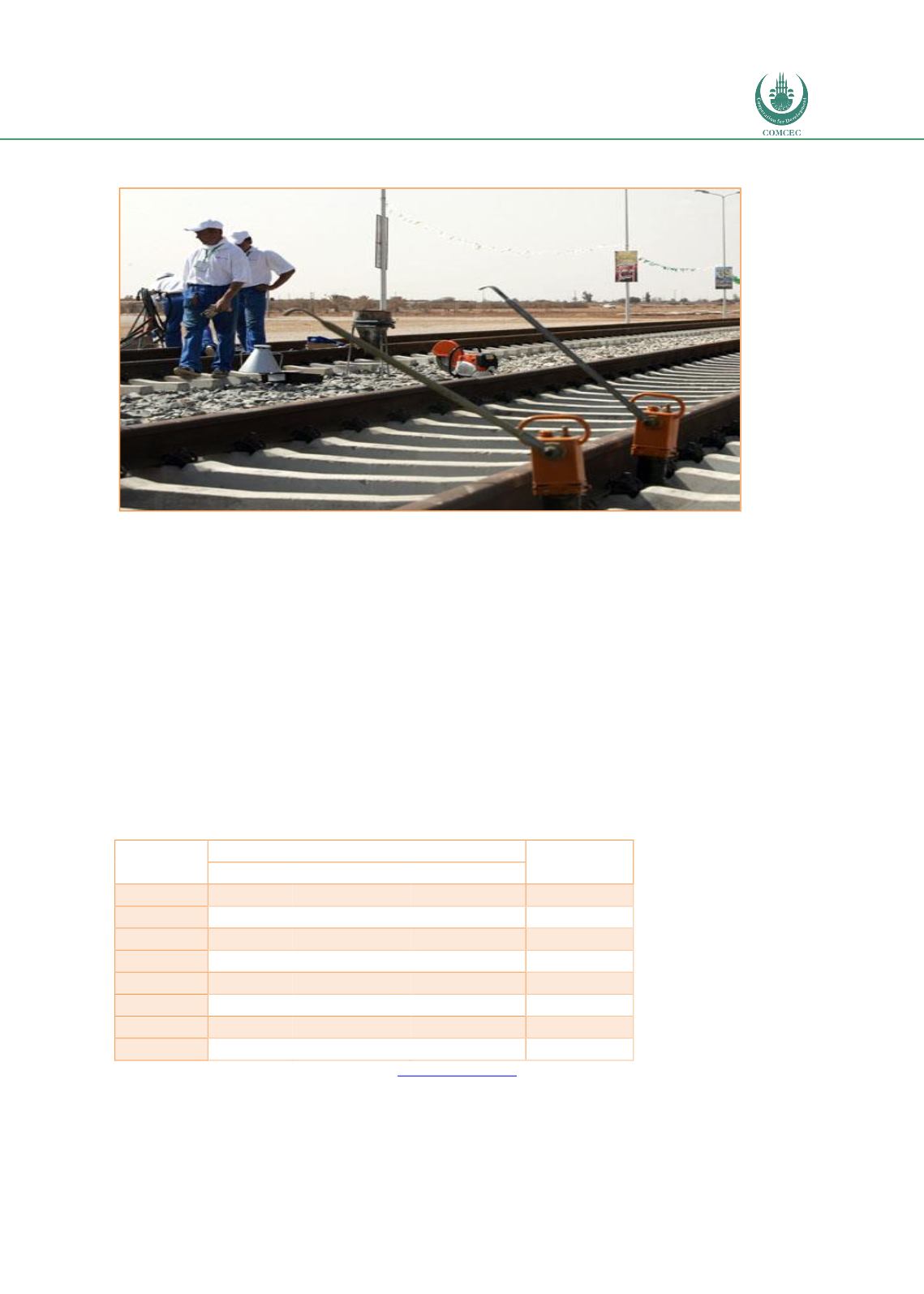

Improving Transnational Transport Corridors
In the OIC Member Countries: Concepts and Cases
119
Figure 44: Railway link on potential corridor Libya
Source: Railway Gazette (2008).
4.5.3.
Economic factors
The socio-economic relationship between countries along TAH1 is not well developed. The
driving force for African corridors historically has been to land link resources for external
trade. In this case, each country has its own port, but, as with all African countries, trading
relations are more with Europe and the rest of the world, than between themselves. It is
expected that better connectivity between the countries will help to change this.
Due to its oil and gas exports, Algeria is the most open trading economy followed by Morocco.
The least open trading economy is seen to be Egypt, yet it has access to the Suez Cannel and
large container ports. The connection between transport infrastructure and trade may be less
obvious in these countries, rather issues of governance and security are of greater relevance.
Table 31: Openness of countries on the TAH1
Country
USD Billions
Openness
GDP
Imports
Exports
EGYPT
331
33.5
12.6
14%
LIBYA
92.6
9.5
10.65
22%
TUN
131
25
16.7
32%
ALG
166.8
48
77
75%
MOR
100.4
35
18
53%
W. SAHA
1
N/A
N/A
N/A
MAU
5.8
2.55
1.95
78%
SEN
13.8
5.6
2.6
59%
Source: Fimotions (2017), analysis on data o
n www.trademap.org . Table 32shows there to be wide disparity between TAH1 participants in term of EoDB.
Generally the times taken and costs of completing border processes are very high indeed. In
















